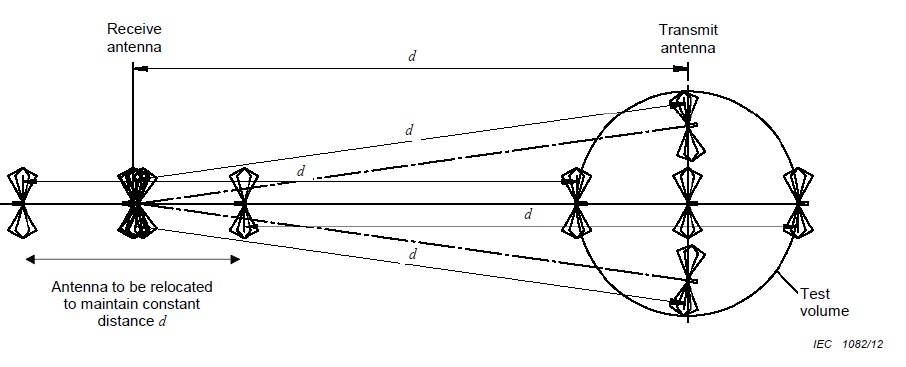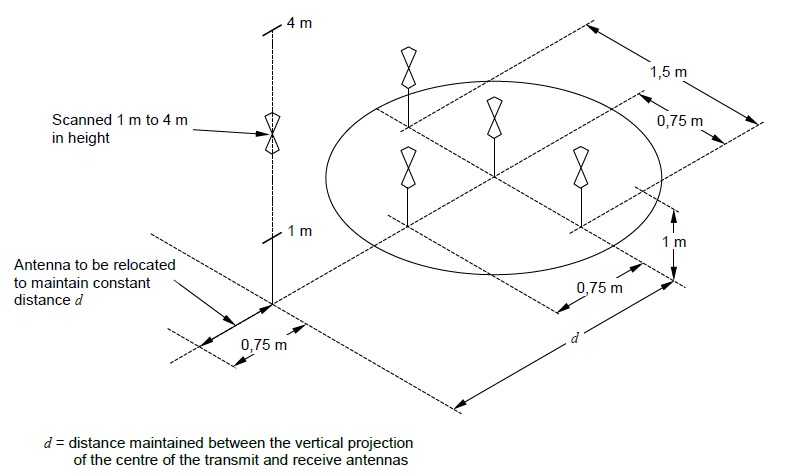In electromagnetic compatibility (EMC) testing, accuracy and repeatability are critical. One of the most essential steps in ensuring valid radiated emissions measurements is to verify the performance of the test environment itself.
Normalized Site Attenuation (NSA) is a key metric used to evaluate whether an EMC test site—such as an Open Area Test Site (OATS) or a Semi-Anechoic Chamber (SAC)—is suitable for conducting radiated emissions tests in the 30 MHz to 1 GHz frequency range.
NSA quantifies the attenuation of a transmitted signal caused by the ground plane and chamber environment, compared to an ideal free-space condition. In essence, it confirms whether the site behaves like an ideal test environment, free of unwanted reflections and distortions.
By ensuring compliance with NSA requirements, test facilities can:
Normalized Site Attenuation (NSA) is the difference between the theoretical and actual attenuation of a signal transmitted and received across a test site under controlled conditions. It reflects how well the test environment behaves compared to an ideal free-space setup.
The purpose of NSA measurement is to:
By achieving the required NSA within the tolerance specified by CISPR 16-1-4 (typically ±4 dB), a site demonstrates that it is suitable for repeatable and accurate radiated emissions measurements.
CISPR 16-1-4 is the international standard that outlines the procedures, instrumentation, and performance requirements for NSA measurements. It is a part of the CISPR 16 series, which governs EMC test methods and equipment calibration.
Key requirements of CISPR 16-1-4 for NSA testing include:

The measurement involved setting up two identical co-polarized antennas.
Prior to commencing measurement, the VNA (S21) was calibrated by connecting the transmit and receive antennae cables through a short to eliminate the effect of cables, attenuators and connectors.
Ambient noise measurements were carried out by re-connecting the receive antenna only. It was confirmed that the ambient noise is more than 20 dB below the actual signal
Next the transmit antenna was connected and receive antenna scanned from 1-4m with VNA S21 trace in max-hold mode. After completion of scan, VNA sweep was acquired using a computer and there after post processed along with the Antenna factors to obtain the NSA and its deviation with the target values specified in CISPR 16-1-4:2019/AMD1:2020
The measured NSA is calculated, as below:-



Accurate Normalized Site Attenuation (NSA) measurements are crucial for validating the performance of EMC test sites. However, several common issues can lead to deviations beyond the acceptable ±4 dB range specified in CISPR 16-1-4. Understanding these pitfalls is essential for maintaining the integrity of radiated emissions testing.
Normalized Site Attenuation (NSA) is essential for validating the performance of EMC test sites, ensuring accurate radiated emissions measurements. Adhering to CISPR 16-1-4 standards, maintaining NSA deviations within ±4 dB confirms the site’s compliance and reliability. Regular assessments and addressing potential issues—such as equipment calibration, site construction flaws, and environmental interferences—are vital for sustaining measurement integrity and meeting international EMC requirements.
Copyright © 2024 – Tekiknow – All Rights Reserved Designed By Clemence Web Solutions.,